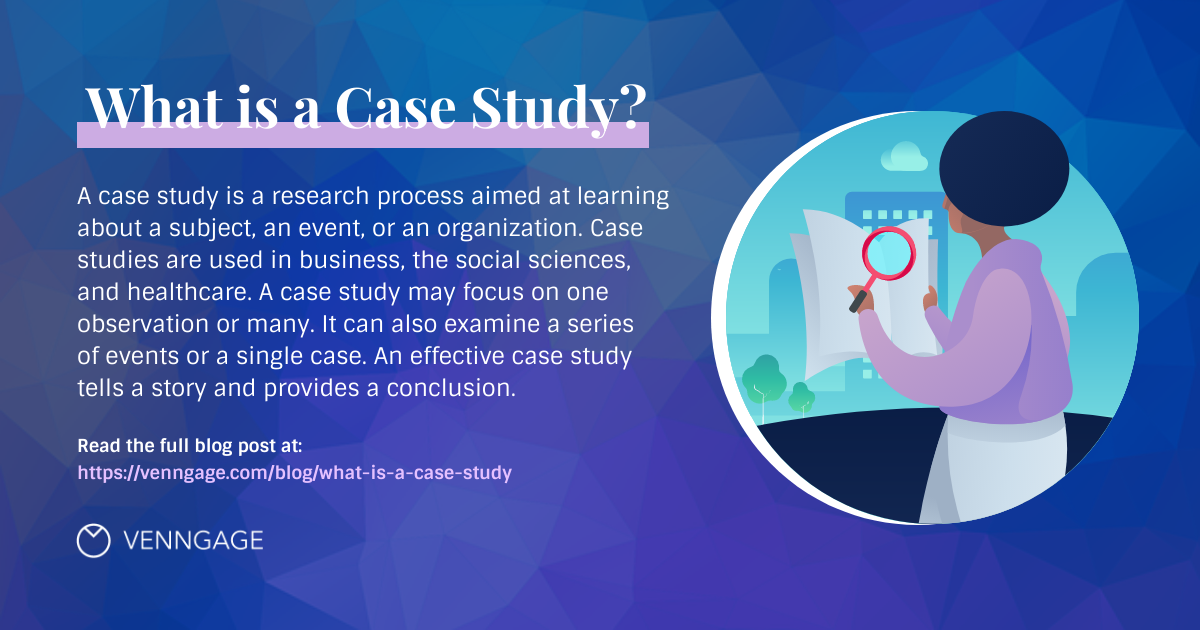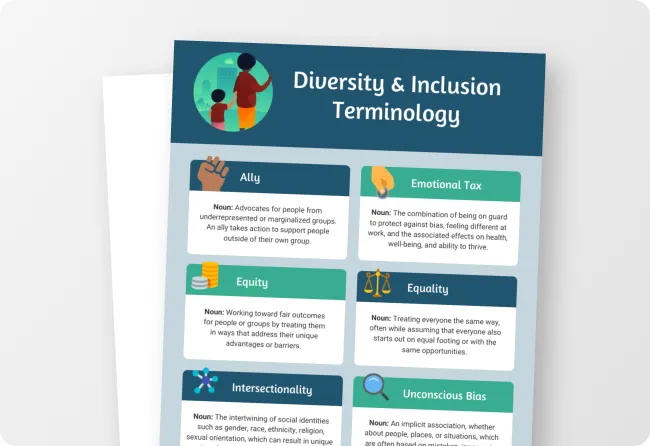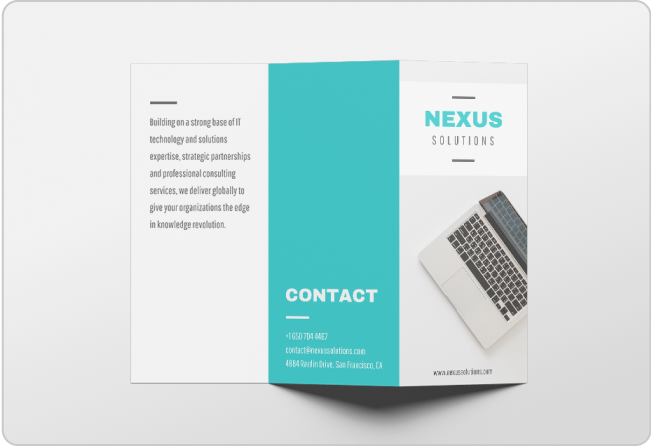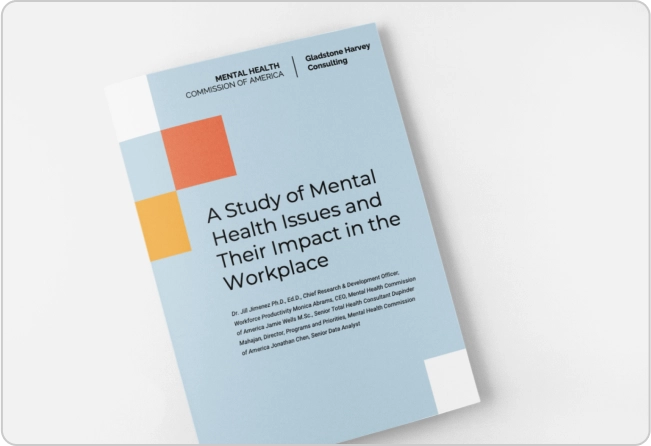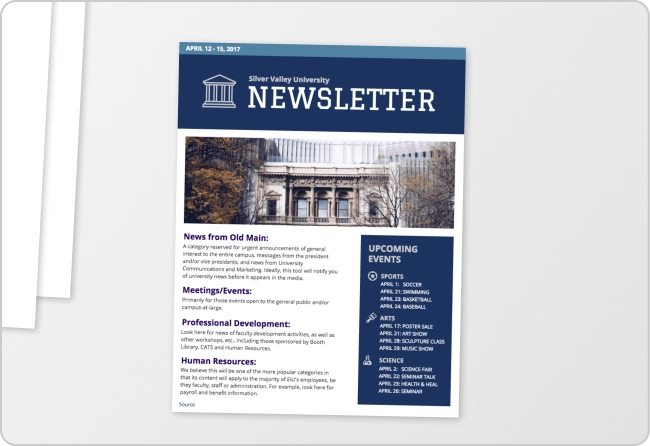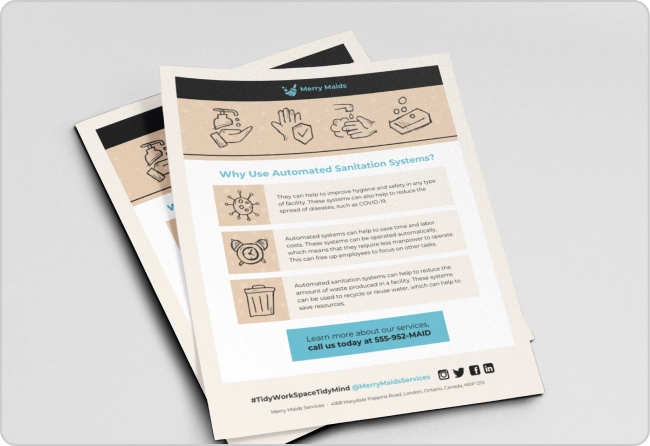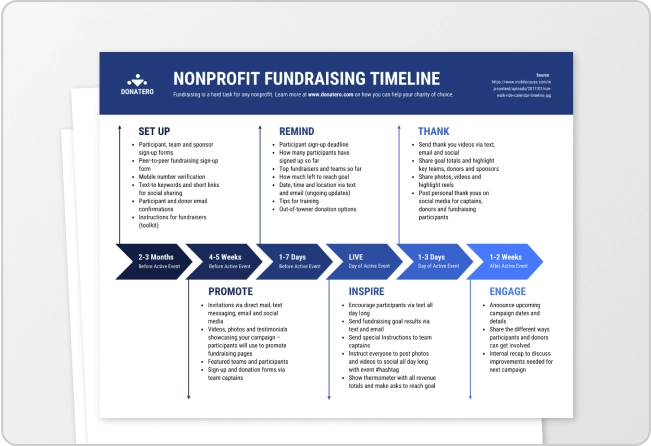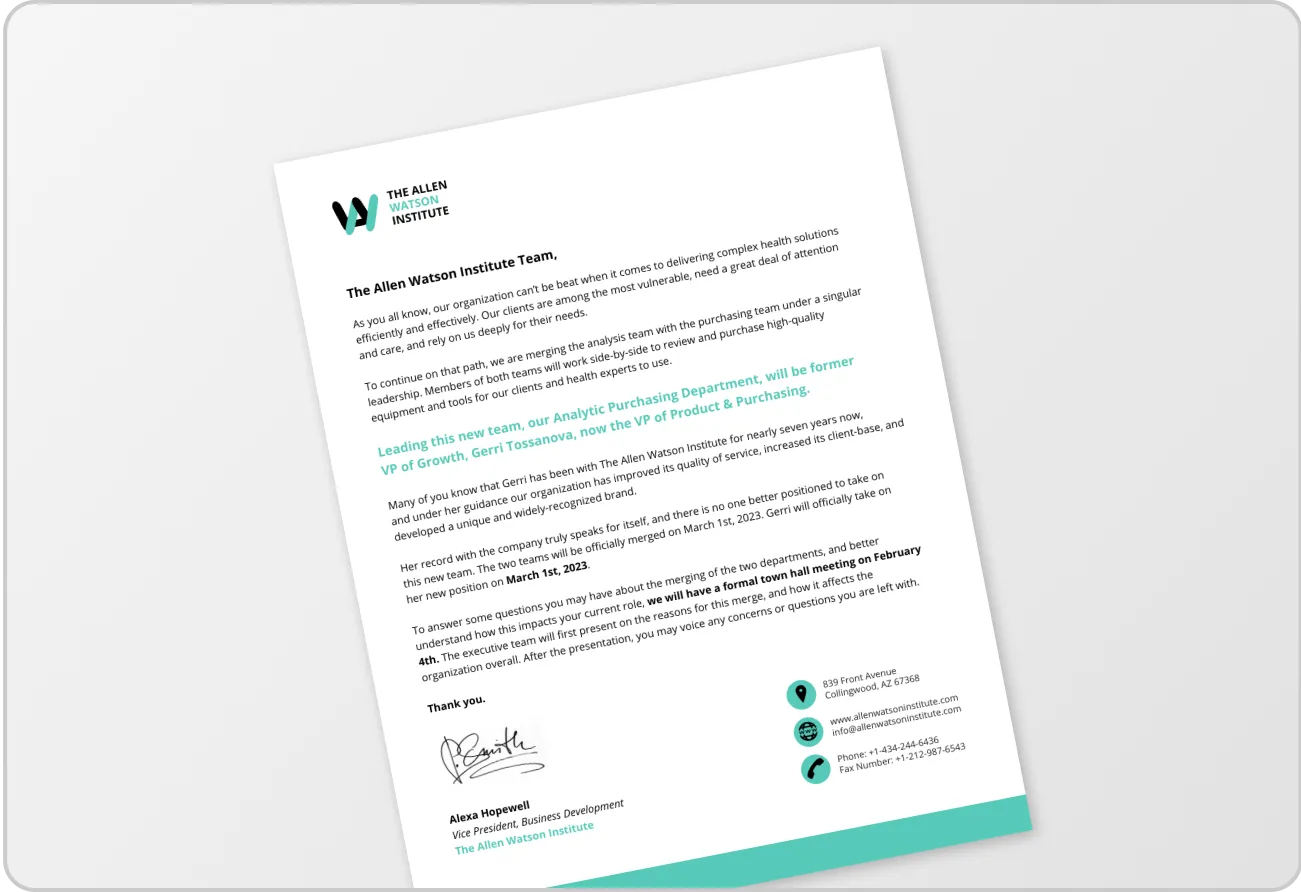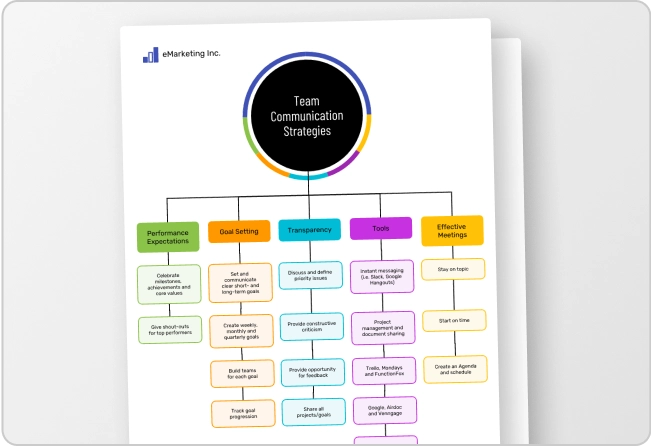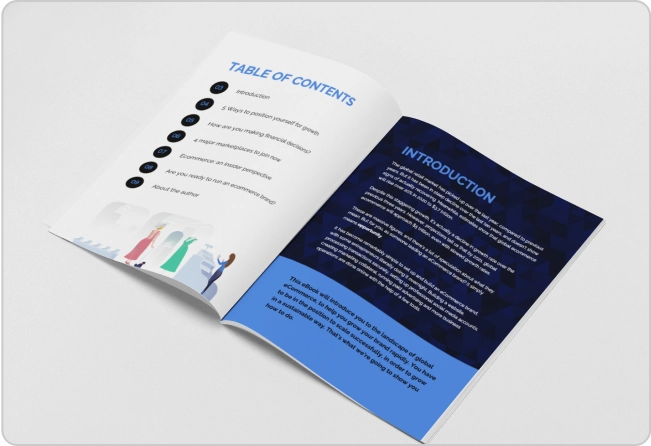Case studies have become powerful business tools. But what is a case study? What are the benefits of creating one? Are there limitations to the format?
If you’ve asked yourself these questions, our helpful guide will clear things up. Learn how to use a case study for business. Find out how cases analysis works in psychology and research.
We’ve also got examples of case studies to inspire you.
Haven’t made a case study before? You can easily create a case study with Venngage’s customizable case study templates.
What is a case study?
A case study is more than just a research method, it’s a way to dive deep into a subject, event or organization to really understand what’s going on.
When done right, a case study tells a compelling story, shares insights, and wraps up with a clear conclusion. And they work—companies that use case studies effectively can boost their conversion rates by up to 73%. That’s the power of showing results instead of just talking about them.
You’ll see them used everywhere from business to healthcare to the social sciences. A case study may focus on one observation or many. It can also examine a series of events or a single case. An effective how to write a case study analysis tells a story and provides a conclusion.
Healthcare industries write reports on patients and diagnoses. Marketing case study examples, like the one below, highlight the benefits of a business product.
Now that you know what a case study is, let’s look at the six different types of case studies next.
6 Types of case studies
There are six common types of case reports. Depending on your industry, you might use one of these types.
- Descriptive case studies
- Explanatory case studies
- Exploratory case reports
- Intrinsic case studies
- Instrumental case studies
- Collective case reports
We go into more detail about each type of study in the guide below.
Related: 15+ Professional Case Study Examples [Design Tips + Templates]
Descriptive case studies
When you have an existing hypothesis, you can design a descriptive study. This type of report starts with a description. The aim is to find connections between the subject being studied and a theory.
Once these connections are found, the study can conclude. The results of this type of study will usually suggest how to develop a theory further.
A study like the one below has concrete results. A descriptive report would use the quantitative data as a suggestion for researching the subject deeply.
Explanatory case studies
When an incident occurs in a field, an explanation is required. An explanatory report investigates the cause of the event. It will include explanations for that cause.
The study will also share details about the impact of the event. In most cases, this report will use evidence to predict future occurrences. The results of explanatory reports are definitive.
Note that there is no room for interpretation here. The results are absolute.
The study below is a good example. It explains how one brand used the services of another. It concludes by showing definitive proof that the collaboration was successful.
Another example of this study would be in the automotive industry. If a vehicle fails a test, an explanatory study will examine why. The results could show that the failure was because of a particular part.
Related: How to Write a Case Study [+ Design Tips]
Exploratory case reports
An explanatory report is a self-contained document. An exploratory one is only the beginning of an investigation.
Exploratory cases act as the starting point of studies. This is usually conducted as a precursor to large-scale investigations. The research is used to suggest why further investigations are needed.
An exploratory study can also be used to suggest methods for further examination.
For example, the below analysis could have found inconclusive results. In that situation, it would be the basis for an in-depth study.
Intrinsic case studies
Intrinsic studies are more common in the field of psychology. These reports can also be conducted in healthcare or social work.
These types of studies focus on a unique subject, such as a patient. They can sometimes study groups close to the researcher.
The aim of such studies is to understand the subject better. This requires learning their history. The researcher will also examine how they interact with their environment.
For instance, if the case study below was about a unique brand, it could be an intrinsic study.
Once the study is complete, the researcher will have developed a better understanding of a phenomenon. This phenomenon will likely not have been studied or theorized about before.
Examples of intrinsic case analysis can be found across psychology. For example, Jean Piaget’s theories on cognitive development. He established the theory from intrinsic studies into his own children.
Related: What Disney Villains Can Tell Us About Color Psychology [Infographic]
Instrumental case studies
This is another type of study seen in medical and psychology fields. Instrumental reports are created to examine more than just the primary subject.
When research is conducted for an instrumental study, it is to provide the basis for a larger phenomenon. The subject matter is usually the best example of the phenomenon. This is why it is being studied.
Take the example of the fictional brand below.
Assume it’s examining lead generation strategies. It may want to show that visual marketing is the definitive lead generation tool. The brand can conduct an instrumental case study to examine this phenomenon.
Collective case reports
Collective studies are based on instrumental case reports. These types of studies examine multiple reports.
There are a number of reasons why collective reports are created:
- To provide evidence for starting a new study
- To find pattens between multiple instrumental reports
- To find differences in similar types of cases
- Gain a deeper understanding of a complex phenomenon
- Understand a phenomenon from diverse contexts
A researcher could use multiple reports, like the one below, to build a collective case report.
Related: 10+ Case Study Infographic Templates That Convert
What is a business case study?
A good business or marketing case study is really just a success story, whether it’s about a brand-client partnership or a specific project that delivered great results. And while some people think case studies are just another way to advertise, the best ones actually help potential clients see how you can solve their problems.
In fact, case studies build trust fast. A Demand Gen Report found that 78% of B2B buyers rely on them when researching purchases, because real results speak louder than pitches.
Hubspot created a case study on a customer that successfully scaled its business. The report outlines the various Hubspot tools used to achieve these results.

Hubspot also added a video with testimonials from the client company’s employees.
So, what is the purpose of a case study for businesses? There is a lot of competition in the corporate world. Companies are run by people. They can be on the fence about which brand to work with.
Business reports stand out aesthetically, as well. They use brand colors and brand fonts. Usually, a combination of the client’s and the brand’s.
With the Venngage My Brand Kit feature, businesses can automatically apply their brand to designs.
A business case study, like the one below, acts as social proof. This helps customers decide between your brand and your competitors.
Don’t know how to design a report? You can learn how to write a case study with Venngage’s guide. We also share design tips and examples that will help you convert.
What is a case study in research?
Research is a necessary part of every case study. But specific research fields are required to create studies. These fields include user research, healthcare, education, or social work.
For example, this UX Design report examined the public perception of a client. The brand researched and implemented new visuals to improve it. The study breaks down this research through lessons learned.

Clinical reports are a necessity in the medical field. These documents are used to share knowledge with other professionals. They also help examine new or unusual diseases or symptoms.
The pandemic has led to a significant increase in research. For example, Spectrum Health studied the value of health systems in the pandemic. They created the study by examining community outreach.

The pandemic has significantly impacted the field of education. This has led to numerous examinations on remote studying. There have also been studies on how students react to decreased peer communication.
Social work case reports often have a community focus. They can also examine public health responses. In certain regions, social workers study disaster responses.
You now know what case studies in various fields are. In the next step of our guide, we explain the case study method.
What is a case study in psychology?
In the field of psychology, case studies focus on a particular subject. Psychology case histories also examine human behaviors.
Case reports search for commonalities between humans. They are also used to prescribe further research. Or these studies can elaborate on a solution for a behavioral ailment.
The American Psychology Association has a number of case studies on real-life clients. Note how the reports are more text-heavy than a business case study.

Famous psychologists such as Sigmund Freud and Anna O popularised the use of case studies in the field. They did so by regularly interviewing subjects. Their detailed observations build the field of psychology.
It is important to note that psychological studies must be conducted by professionals. Psychologists, psychiatrists and therapists should be the researchers in these cases.
Related: What Netflix’s Top 50 Shows Can Teach Us About Font Psychology [Infographic]
What is the case study method?
The case study method, or case method, is a learning technique where you’re presented with a real-world business challenge and asked how you’d solve it.
After working through it independently and with peers, you learn how the actual scenario unfolded. This approach helps develop problem-solving skills and practical knowledge.
This method often uses various data sources like interviews, observations, and documents to provide comprehensive insights. The below example would have been created after numerous interviews.
Case studies are largely qualitative. They analyze and describe phenomena. While some data is included, a case analysis is not quantitative.
There are a few steps in the case method. You have to start by identifying the subject of your study. Then determine what kind of research is required.
In natural sciences, case studies can take years to complete. Business reports, like this one, don’t take that long. A few weeks of interviews should be enough.
The case method will vary depending on the industry. Reports will also look different once produced.
As you will have seen, business reports are more colorful. The design is also more accessible. Healthcare and psychology reports are more text-heavy.
Benefits of case studies
Designing case reports takes time and energy. So, is it worth taking the time to write them? Here are the benefits of creating case studies.
- Collects large amounts of information
- Helps formulate hypotheses
- Builds the case for further research
- Discovers new insights into a subject
- Builds brand trust and loyalty
- Engages customers through stories
For example, the business study below creates a story around a brand partnership. It makes for engaging reading. The study also shows evidence backing up the information.
We’ve shared the benefits of why studies are needed. We will also look at the limitations of creating them.
Related: How to Present a Case Study like a Pro (With Examples)
Limitations of case studies
There are a few disadvantages to conducting a case analysis. The limitations will vary according to the industry.
- Responses from interviews are subjective
- Subjects may tailor responses to the researcher
- Studies can’t always be replicated
- In certain industries, analyses can take time and be expensive
- Risk of generalizing the results among a larger population
These are some of the common weaknesses of creating case reports. If you’re on the fence, look at the competition in your industry.
Other brands or professionals are building reports, like this example. In that case, you may want to do the same.
FAQs about case studies
What makes a case study a case study?
A case study has a very particular research methodology. They are an in-depth study of a person or a group of individuals. They can also study a community or an organization. Case reports examine real-world phenomena within a set context.
How long should a case study be?
The length of studies depends on the industry. It also depends on the story you’re telling. Most case studies should be at least 500-1500 words long. But you can increase the length if you have more details to share.
What should you ask in a case study?
The one thing you shouldn’t ask is ‘yes’ or ‘no’ questions. Case studies are qualitative. These questions won’t give you the information you need.
Ask your client about the problems they faced. Ask them about solutions they found. Or what they think is the ideal solution. Leave room to ask them follow-up questions. This will help build out the study.
How to present a case study?
When you’re ready to present a case study, begin by providing a summary of the problem or challenge you were addressing. Follow this with an outline of the solution you implemented, and support this with the results you achieved, backed by relevant data. Incorporate visual aids like slides, graphs, and images to make your case study presentation more engaging and impactful.
What are the types of case studies in qualitative research?
Qualitative research uses various types of case studies, including intrinsic, instrumental and collective designs. Each case study method allows for in-depth exploration of complex issues within real-world contexts, guided by a strong research design and qualitative data collection.
What is research methodology in a case study?
In the case study method, research methodology refers to the overall strategy used to collect and analyze data. A sound research design supports this methodology, combining multiple qualitative tools to explore the subject in depth within its context.
When should you use mixed methods in a case study?
Mixed methods are ideal when combining qualitative and quantitative approaches enhances the research. This hybrid strategy allows you to gather richer insights, using qualitative depth and quantitative breadth within a single case study or across multiple ones.
How do you conduct document analysis within a case study?
Document analysis in a case study involves systematically reviewing data sources such as archival document data sources, reports and records. These materials provide context, support triangulation and help validate findings alongside other qualitative methods.
What is comparative case study analysis?
Comparative case studies involve analyzing two or more cases to identify patterns or contrasts. This comparative case approach strengthens understanding by comparing multiple case studies across similar or differing contexts.
Summary
Now you know what a case study means, you can begin creating one. These reports are a great tool for analyzing brands. They are also useful in a variety of other fields.
Use a visual communication platform like Venngage to design case studies. With Venngage’s templates, you can design easily. Create branded, engaging reports, all without design experience.





























